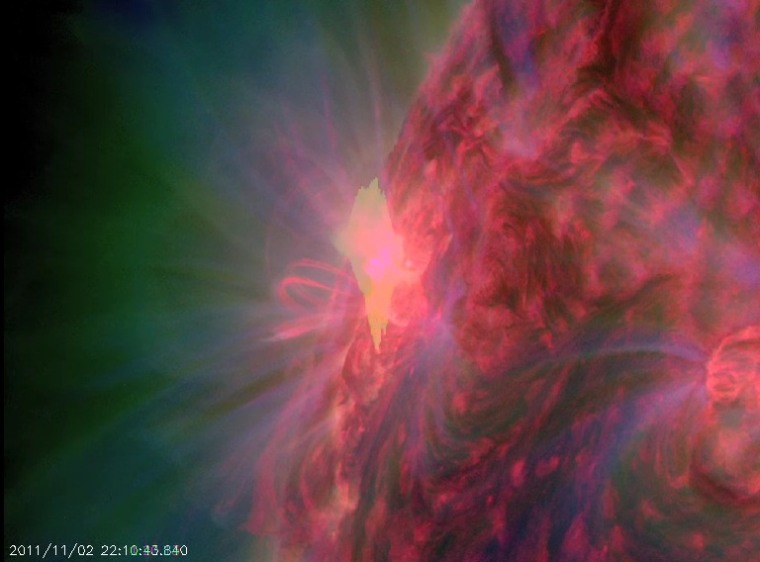After years of quiet, the sun is coming alive with solar storms in a big way.
The sun shot off a flare Thursday afternoon from a region that scientists are calling a "benevolent monster."
Scientists at the federal Space Weather Prediction Center say that area is the most active part of the sun since 2005.
It has dozens of sunspots, including one that is the size of 17 Earths. Sunspots are kinks or knots in the sun's magnetic field that appear dark against the brighter expanse of the sun's surface.
"It's beautiful," said forecaster Jess Whittington. "It's still growing. The size is what blows me away."
Thursday's flare wasn't aimed at Earth. However, this active region is now slowly turning toward Earth, and scientists say it will be directly facing Earth in about five days. SpaceWeather.com's Tony Phillips said the sunspot group should be "an easy target for backyard solar telescopes." (Such telescopes are designed for solar viewing; it's not safe to gaze directly at the sun without taking proper precautions.)
The stormy region will affect Earth only if it shoots off flares and they hit our planet, which doesn't always happen with stormy areas, said Joe Kunches, a space scientist at the prediction center.
The region will be facing Earth for about two weeks as it rotates, he said.
Solar flares send out bursts of electromagnetic energy that can occasionally disrupt communications and electrical systems.
For the past several years, the sun has been at a quiet end of its cycle and only recently has gotten more active. Solar cycles go in an 11-year period.
This cycle has had fewer storms than usual for this time in its cycle. But that may be changing. "The sun is looking more like we think it should at this point in the solar cycle," Kunches said. "It's got a number of active centers."
This report includes information from The Associated Press and msnbc.com.
More about solar storms:
